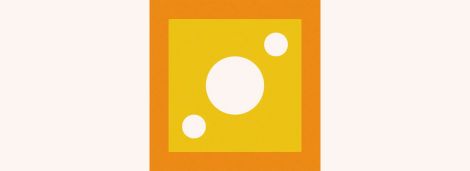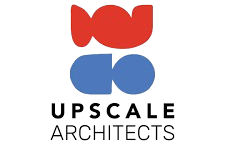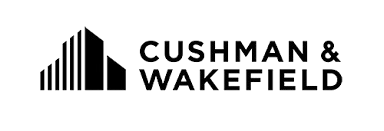These technologies allow for precise planning and innovative solutions. Upscale office furniture and contemporary interiors are key elements. They offer comfort and style, enhancing productivity and well-being.
Biophilic design and sustainability are also gaining traction. Natural elements and eco-friendly practices are becoming essential. As we explore these trends, discover how they can elevate your workspace.
Defining Luxury Modern Office Design
Luxury modern office design represents a blend of function, aesthetics, and innovation. It's about creating spaces that are both visually striking and incredibly efficient. Each element plays a crucial role in shaping the workspace ambiance.
Key characteristics of this design trend include clean lines and minimalist aesthetics. These features promote a sense of openness and clarity. Combining these with high-end materials ensures a lasting impression.
Attention to detail is paramount. Designers focus on seamless integration of technology and comfort. This includes smart systems, ergonomic furniture, and state-of-the-art finishes.
Components of Luxury Modern Office Design:
- High-quality materials and finishes
- Integration of smart technology
- Focus on ergonomics and comfort
- Minimalist aesthetics with clean lines
- Customization to reflect brand identity
Personalization is another cornerstone. Each office design often mirrors the company’s identity, creating a cohesive and unique experience for employees and visitors alike.
.webp)
The Role of Technology: AI, CAD, and Smart Solutions
Technology is revolutionizing luxury modern office design. It brings precision, efficiency, and customization to new heights. AI tools analyze data to optimize space utilization and workflow.
AI CAD offers designers unparalleled accuracy. It allows for the creation of detailed and complex designs quickly. This technology helps in visualizing spaces before they're built, minimizing errors.
Smart solutions are becoming a staple in office design. IoT devices manage lighting, temperature, and acoustics. These elements can be adjusted automatically, enhancing comfort and productivity.
Key Technological Innovations:
- AI for space optimization
- CAD for precise design and visualization
- IoT for smart environmental control
- Automated systems for efficiency
- Interactive displays for enhanced collaboration
Integration of technology supports a responsive work environment. It adapts to the needs of employees in real-time. Such innovation aligns with the demand for adaptable and forward-thinking office spaces.
Technology not only beautifies the office but enhances functionality. It ensures that a luxury modern office is as intelligent as it is impressive. This blend of tech and aesthetics sets the standard for future office designs.
Upscale Office Furniture: Comfort Meets Style
Luxury modern office design thrives on the synergy between comfort and sophistication. Upscale office furniture embodies this balance with precision. It features sleek lines and high-quality materials that exude elegance.
Ergonomics is paramount in modern office furniture. Ensuring employee well-being is crucial for productivity. Desks and chairs are designed with user comfort in mind, often adjustable to personal preferences.
Materials used in upscale furniture are carefully selected. They include luxurious woods, metals, and eco-friendly textiles. These choices reflect both sustainability and a refined taste.
Characteristics of Upscale Office Furniture:
- Sleek, minimalist designs
- High-quality, durable materials
- Ergonomic features for comfort
- Flexibility for personalization
- Eco-friendly production methods
These furnishings not only enhance aesthetics but also contribute to a functional workspace. With the trend toward remote work, home offices are getting luxury upgrades. Upscale furniture now bridges the gap between style and utility in both settings.
Contemporary Office Interiors: Open Plans and Flexible Spaces
Contemporary office interiors emphasize open plans that promote collaboration. These layouts break down barriers, fostering communication among team members. Open spaces allow for easy interaction and flexibility.
The demand for adaptive work environments is growing. Businesses are integrating flexible spaces with movable furniture. This creates dynamic office layouts that can change based on needs.
Interior designs in modern offices often incorporate multipurpose areas. These spaces support a variety of activities, from casual meetings to focused work sessions. They enhance both productivity and versatility.
Key Features of Contemporary Office Interiors:
- Open floor plans
- Movable and modular furniture
- Multi-functional spaces
- Encouragement of collaboration
- Smooth integration of tech solutions
These designs reflect a shift toward a more fluid work style, blending form and function seamlessly. Contemporary interiors align with the evolving nature of the workplace, supporting both individual and group needs. They epitomize the adaptability essential in today’s business world.
Biophilic and Sustainable Design Elements
Biophilic design is gaining momentum in luxury office design. It emphasizes a connection to nature within the workspace. Incorporating natural elements boosts productivity and well-being.
Sustainability has become a cornerstone of modern office design. Using eco-friendly materials reflects commitment to the environment. This approach not only benefits the planet but can also enhance brand image.
Many offices integrate biophilic features like indoor plants and water elements. Such additions help improve air quality and reduce stress. Employees often find these natural elements calming and refreshing.
Notable Biophilic and Sustainable Features:
- Use of natural light
- Indoor plants and greenery
- Sustainable, eco-friendly materials
- Water elements, like fountains or aquariums
- Recycling and waste reduction practices
Combining sustainability with biophilic design creates a healthier work environment. Employees appreciate the atmosphere, resulting in improved satisfaction and performance. This design trend aligns with forward-thinking, eco-conscious office solutions.
.webp)
Color, Texture, and Lighting: Setting the Mood
Color plays a vital role in luxury modern office design. Neutral palettes dominate but often paired with bold accents. These accents can energize spaces and inspire creativity.
Texture adds depth and interest to office interiors. Incorporating a mix of wood, metal, and fabric creates a dynamic environment. Varying textures can subtly define different areas within an open space.
Lighting is crucial for setting the mood and enhancing productivity. Smart lighting systems adjust to natural light levels. This capability ensures optimal brightness and reduces eye strain during work hours.
Key Elements to Consider:
- Neutral base colors with bold accent pieces
- Varied textures for visual and tactile richness
- Smart lighting that adapts to daylight changes
- Task lighting for specific functional areas
- Reflective surfaces to increase light and space
A thoughtfully curated combination of color, texture, and lighting can transform an office. It can create an inviting, productive workspace that reflects company culture. These elements work together harmoniously to set the tone for success.
Art, Branding, and Personalization in Office Decor
Art has a powerful impact on office spaces. It provides a distinctive touch and can enhance the aesthetic appeal. Incorporating art that resonates with the company ethos can make a profound impression.
Branding integrates into office design through subtle and overt means. Logos and color schemes applied with taste can strengthen brand identity. This consistency helps create a cohesive and memorable environment.
Personalization caters to the unique needs of employees. Allowing staff to decorate individual workspaces fosters a sense of belonging. Personal touches increase satisfaction and productivity among team members.
Effective Strategies for Decor:
- Choose art that embodies company values
- Use branded elements in colors and furniture
- Encourage personalized spaces for employees
- Incorporate statement pieces for impactful visuals
- Rotate art pieces to keep the environment fresh
Art, branding, and personalized decor turn an office into a dynamic space. These elements inspire creativity and ensure a workspace feels like home. Personalization and identity in design are key to modern luxury offices.
Wellness and Ergonomics: Prioritizing Employee Well-Being
Employee well-being is a top priority in luxury modern office design. Thoughtful layouts and ergonomic furniture play vital roles in health. These elements minimize stress and maximize comfort during work hours.
Incorporating wellness areas, like meditation rooms, is becoming standard in high-end offices. These spaces provide employees with relaxation zones to recharge mentally. Access to natural light and clean air also enhances workplace wellness.
Ergonomics is more than just adjustable chairs and desks. It's about creating environments that support physical health throughout the day. This approach helps prevent injuries and boosts productivity by keeping employees comfortable.
Steps to Enhance Wellness and Ergonomics:
- Use ergonomic chairs and desks
- Designate relaxation and meditation rooms
- Maximize natural light exposure
- Ensure high air quality with purification systems
- Encourage regular movement with standing desks
A focus on wellness and ergonomics not only benefits employees but also enhances business success. Comfortable employees are productive employees.
The Future: AI Interior Design for Offices and Modular Solutions
AI interior design is transforming office spaces into more adaptive environments. These smart technologies are optimizing layouts and personalization. The result is efficient workplaces tailored to employee needs.
Modular solutions offer flexibility and innovation in office design. They allow spaces to be reconfigured swiftly, adapting to changing requirements. This adaptability supports both collaborative and private work.
AI makes creating modern, effective workspaces faster and more predictable. With advanced tools, companies can design inspiring offices that reflect culture—without high costs or endless revisions.
qbiq goes beyond floor plans, instantly generating multiple viable layouts and visually compelling concepts, from collaborative hubs to executive suites. Decision-makers can compare and refine designs in real time.
In a case study, qbiq delivered consistent global office concepts while cutting design lead time by over 70%. By pairing functional layouts with creative inspiration, qbiq helps companies achieve both style and substance in their workplaces.
.webp)
Advantages of AI and Modular Solutions:
- Adaptability to changing needs
- Enhanced personalization and comfort
- Improved energy efficiency
- Optimized space usage
- Seamless integration of new technologies
Embracing these advancements leads to more vibrant and efficient workspaces. The future of office design lies in creating spaces that evolve with users.
Key Takeaways and Inspiration for Your Workspace
Luxury modern office design focuses on creating spaces that inspire creativity and productivity. Incorporating technology, sustainability, and personalization elevates any office environment.
Consider the key elements that transform ordinary offices into exceptional spaces. Embrace technology and customization for inspiring, functional, and efficient areas.
Key Points to Consider:
- Integrate AI and IoT for smarter solutions
- Prioritize sustainable and biophilic design elements
- Choose upscale, ergonomic furniture for comfort
- Incorporate branding and art to reflect company culture
- Utilize modular solutions for flexible spaces
Use these insights to redefine your workspace. Tailor the environment to meet both aesthetic and practical needs, fostering a vibrant and forward-thinking office culture.







.png)









